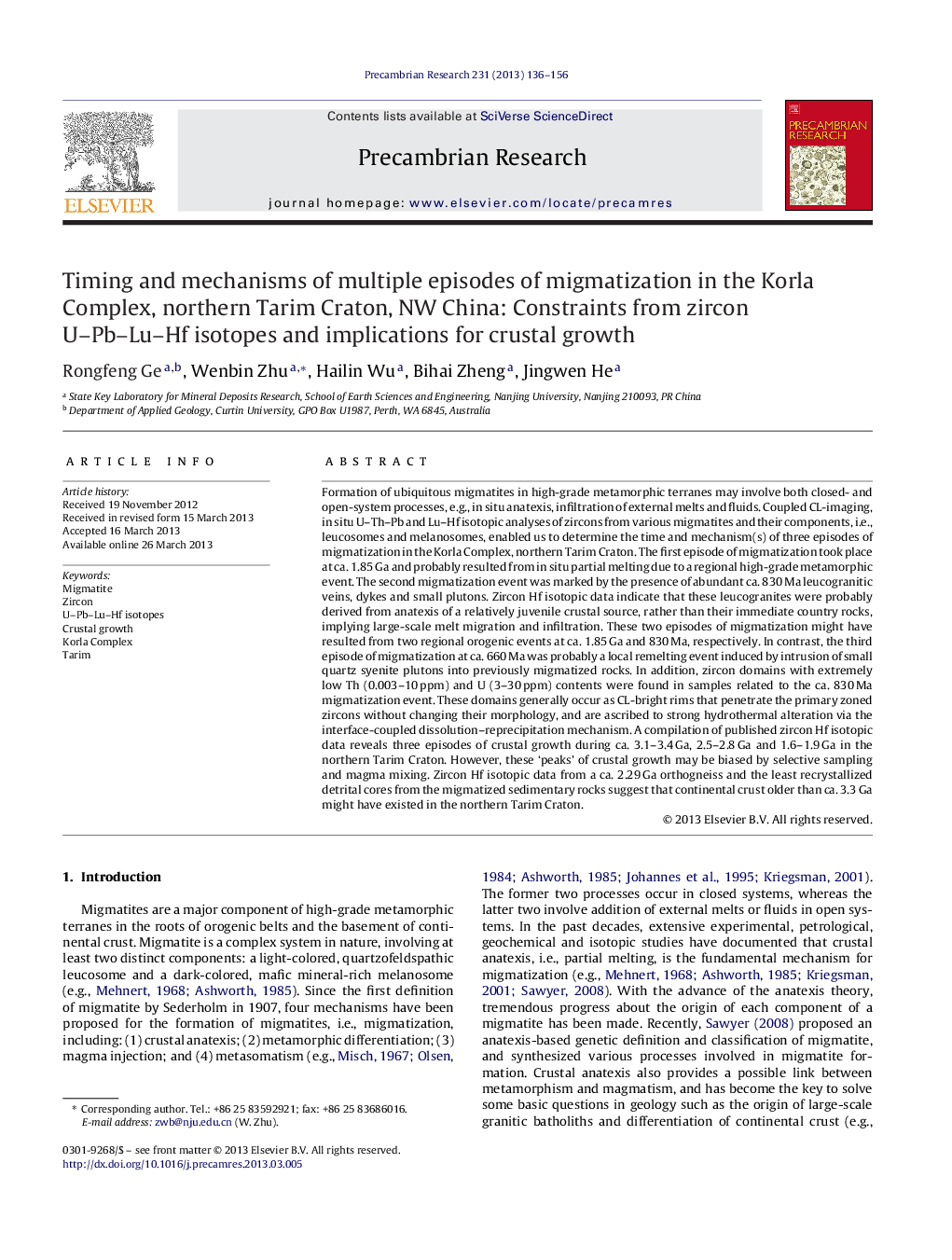| کد مقاله | کد نشریه | سال انتشار | مقاله انگلیسی | نسخه تمام متن |
|---|---|---|---|---|
| 4723213 | 1639643 | 2013 | 21 صفحه PDF | دانلود رایگان |

• Three episodes of migmatization are identified in the Korla Complex, northern Tarim Craton.
• Both in situ anatexis and melt infiltration are documented for the formation of migmatites.
• CL-bright zircon rims with very low Th, U contents are due to strong hydrothermal alteration.
• Our data provide the first evidence for crust older than 3.3 Ga in the northern Tarim Craton.
• Three peaks of crustal growth are defined by available zircon Hf data, but uncertainties remain.
Formation of ubiquitous migmatites in high-grade metamorphic terranes may involve both closed- and open-system processes, e.g., in situ anatexis, infiltration of external melts and fluids. Coupled CL-imaging, in situ U–Th–Pb and Lu–Hf isotopic analyses of zircons from various migmatites and their components, i.e., leucosomes and melanosomes, enabled us to determine the time and mechanism(s) of three episodes of migmatization in the Korla Complex, northern Tarim Craton. The first episode of migmatization took place at ca. 1.85 Ga and probably resulted from in situ partial melting due to a regional high-grade metamorphic event. The second migmatization event was marked by the presence of abundant ca. 830 Ma leucogranitic veins, dykes and small plutons. Zircon Hf isotopic data indicate that these leucogranites were probably derived from anatexis of a relatively juvenile crustal source, rather than their immediate country rocks, implying large-scale melt migration and infiltration. These two episodes of migmatization might have resulted from two regional orogenic events at ca. 1.85 Ga and 830 Ma, respectively. In contrast, the third episode of migmatization at ca. 660 Ma was probably a local remelting event induced by intrusion of small quartz syenite plutons into previously migmatized rocks. In addition, zircon domains with extremely low Th (0.003–10 ppm) and U (3–30 ppm) contents were found in samples related to the ca. 830 Ma migmatization event. These domains generally occur as CL-bright rims that penetrate the primary zoned zircons without changing their morphology, and are ascribed to strong hydrothermal alteration via the interface-coupled dissolution–reprecipitation mechanism. A compilation of published zircon Hf isotopic data reveals three episodes of crustal growth during ca. 3.1–3.4 Ga, 2.5–2.8 Ga and 1.6–1.9 Ga in the northern Tarim Craton. However, these ‘peaks’ of crustal growth may be biased by selective sampling and magma mixing. Zircon Hf isotopic data from a ca. 2.29 Ga orthogneiss and the least recrystallized detrital cores from the migmatized sedimentary rocks suggest that continental crust older than ca. 3.3 Ga might have existed in the northern Tarim Craton.
Figure optionsDownload as PowerPoint slide
Journal: Precambrian Research - Volume 231, July 2013, Pages 136–156